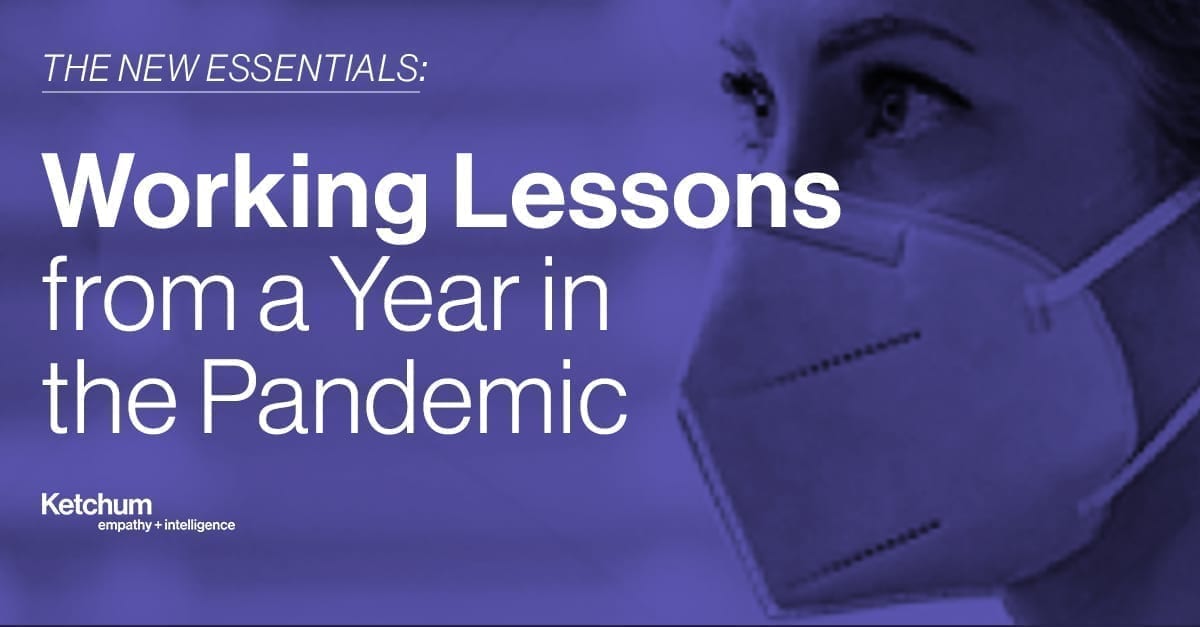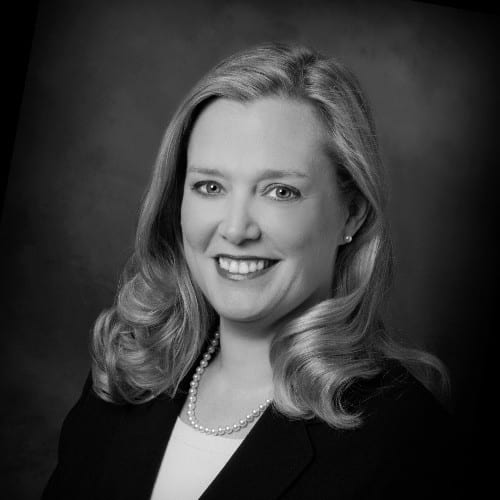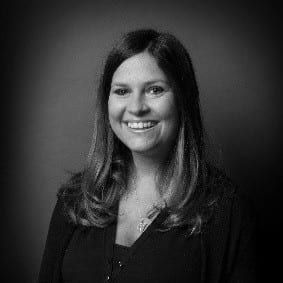It’s part science, part spring weather and part wishful thinking: this sense that we’re starting to emerge from the COVID-19 pandemic. The calendar helps reinforce that impression too, because it’s been a year since we shut down, and our brains like round numbers.

In truth, we have more care and precautions ahead. But the anniversary of the pandemic’s arrival is an occasion to take stock. We all know the space (and headspace) we’ve been in for the past year. What’s coming into focus is where we’re headed next. Ketchum marked the one-year mark with a “New Essentials” workplace study and what we found suggests there will be twists in the road ahead—some challenging, some rewarding, many of them transformative.
The physical and emotional experience of work will be different. We’ve all heard that some “temporary” remote work will become permanent. Other people will go back to offices and worksites. What we’ll all need to adapt to is the hybrid environment, the living workplace, in which both are happening at once. What will partially reoccupied offices feel like? What will this new distribution of people mean for the culture and community organizations have worked so hard to build? And how do physical workspaces need to change to meet the reasons employees are coming in?
Frontline workers stepped up—and we must continue to engage them. First of all, don’t talk to them about a “return to work,” because a lot of them never left. Now that we’ve made it to Spring 2021, largely on their backs, they’re going to be leading the charge to embrace a new-essentials list of benefits, roles and rewards. They adapted for us. And now employers need to continue adapting for them. This is the time to deploy new tools and creative techniques to engage the frontline worker in meaningful ways.
Leadership is coming from different places, through different channels. Throughout the unfolding crisis, most companies increased the frequency of their communications to employees, and their leaders displayed a large dose of empathy. Our study indicates the efforts have worked. Seventy-two percent of American workers stated the amount of communications they received from their employers about important updates and health and safety during the pandemic has been “just right.” This task is changing, not ending, but the secret ingredients will remain the same: creativity, listening and personalization. The territory we’re entering calls for empathetic and transparent leadership that uses communication to forge connections and foster community.
Over the next few months, vaccination against COVID-19 will take up a lot of the air in the room. Do you require it? Require documentation of it? What do you do when only some of your people have received the vaccine? What do you do about the people who don’t want it? As supplies and distribution reach deeper into the population, the immediacy of that question will eventually give way to a longer-term question of policy and safety—and that will form a cornerstone of the hybrid workplace that’s coming.
If this anniversary really does represent an inflection point, we’ve all been told a thousand times by now that it isn’t “back to before.” So what is it? What we’re seeing instead is a switch from the certainty of stress and pessimism to the uncertainty of hope and optimism.
Our own experience is a microcosm of this: Your co-authors aren’t just joined in this article’s byline. We’re joined at the hip—we work together every day. And while we have seen each other every day for a year, we haven’t been in the same time zone together in a year. How weird is it that it isn’t weird anymore? We’ve spent four seasons watching each other’s hair grow, wardrobes cycle and children say goodbye for school each day. What’s it going to be like when we can see each other’s feet again?
We’re all eager to reengage. We know the road ahead is twisty. We can’t see past the first bend, much less far into the future. But if you’re like we are, it’s long past time to hit the gas and go find out. Ketchum’s study is the beginning of a roadmap. Whatever vehicle carried you into and through 2020, the one that will carry you forward from here is a hybrid—a hybrid workforce, a hybrid workplace, a hybrid mindset. Grab the wheel.
Please check out the New Essentials workplace study, and reach out if you’d like to start a conversation.




